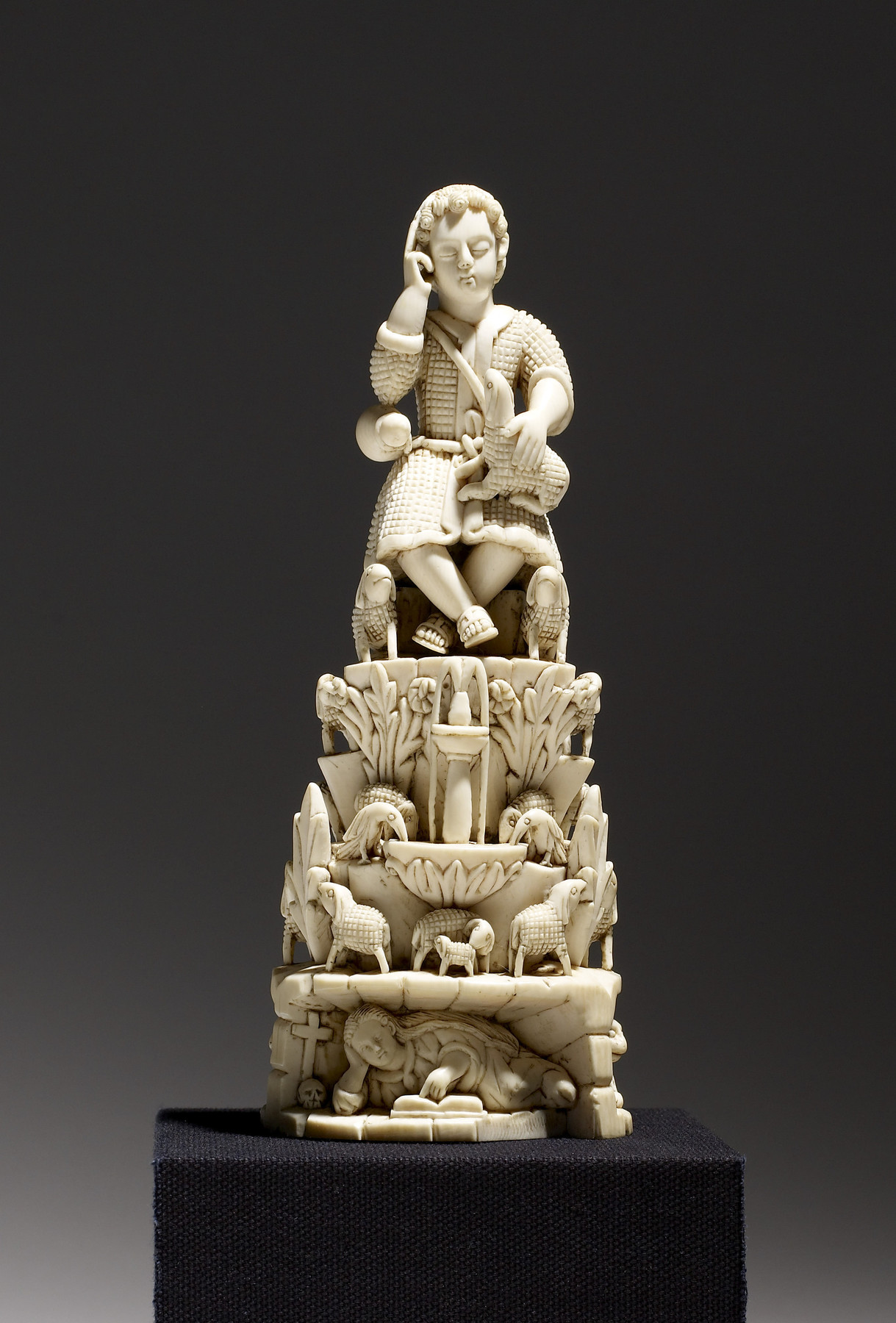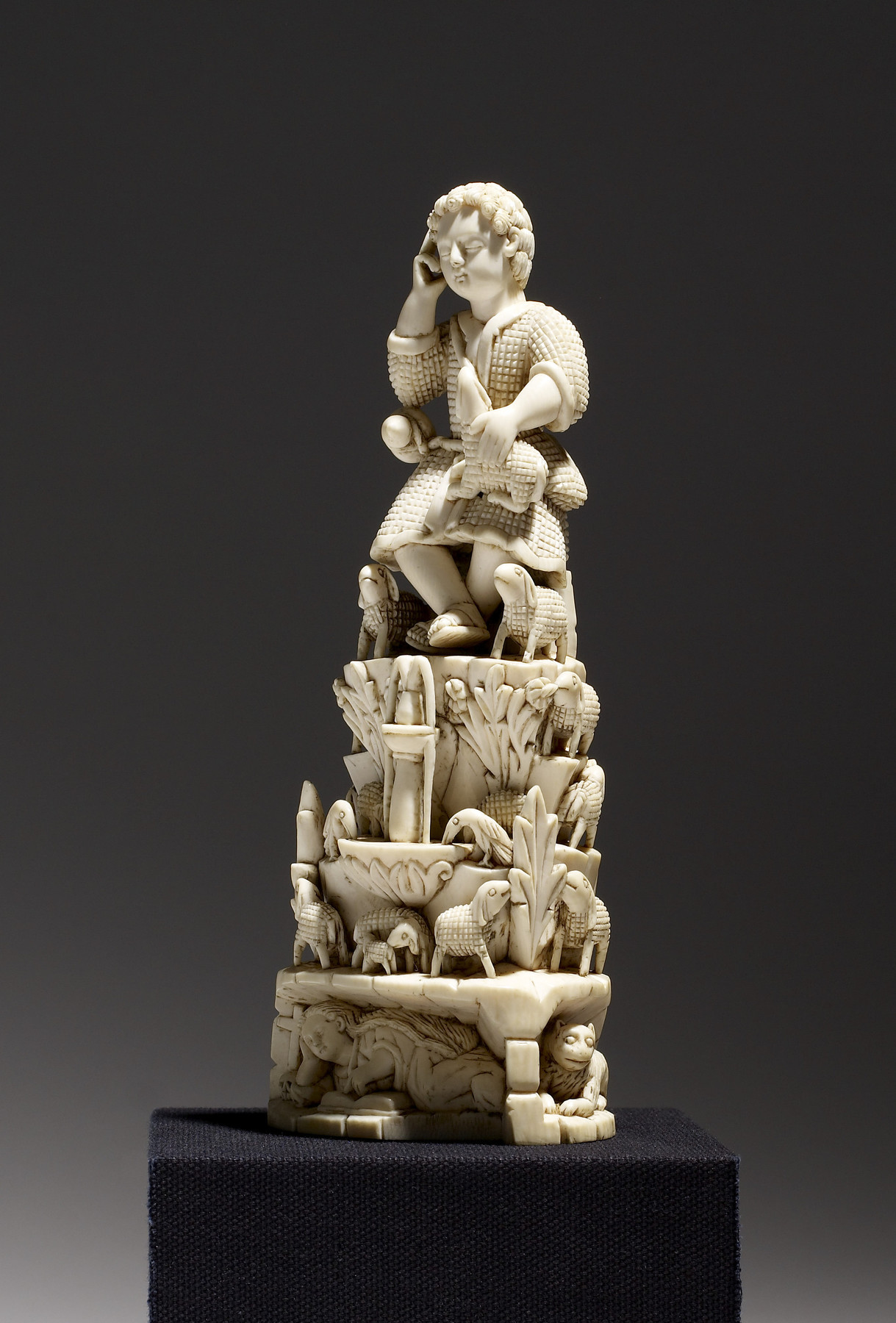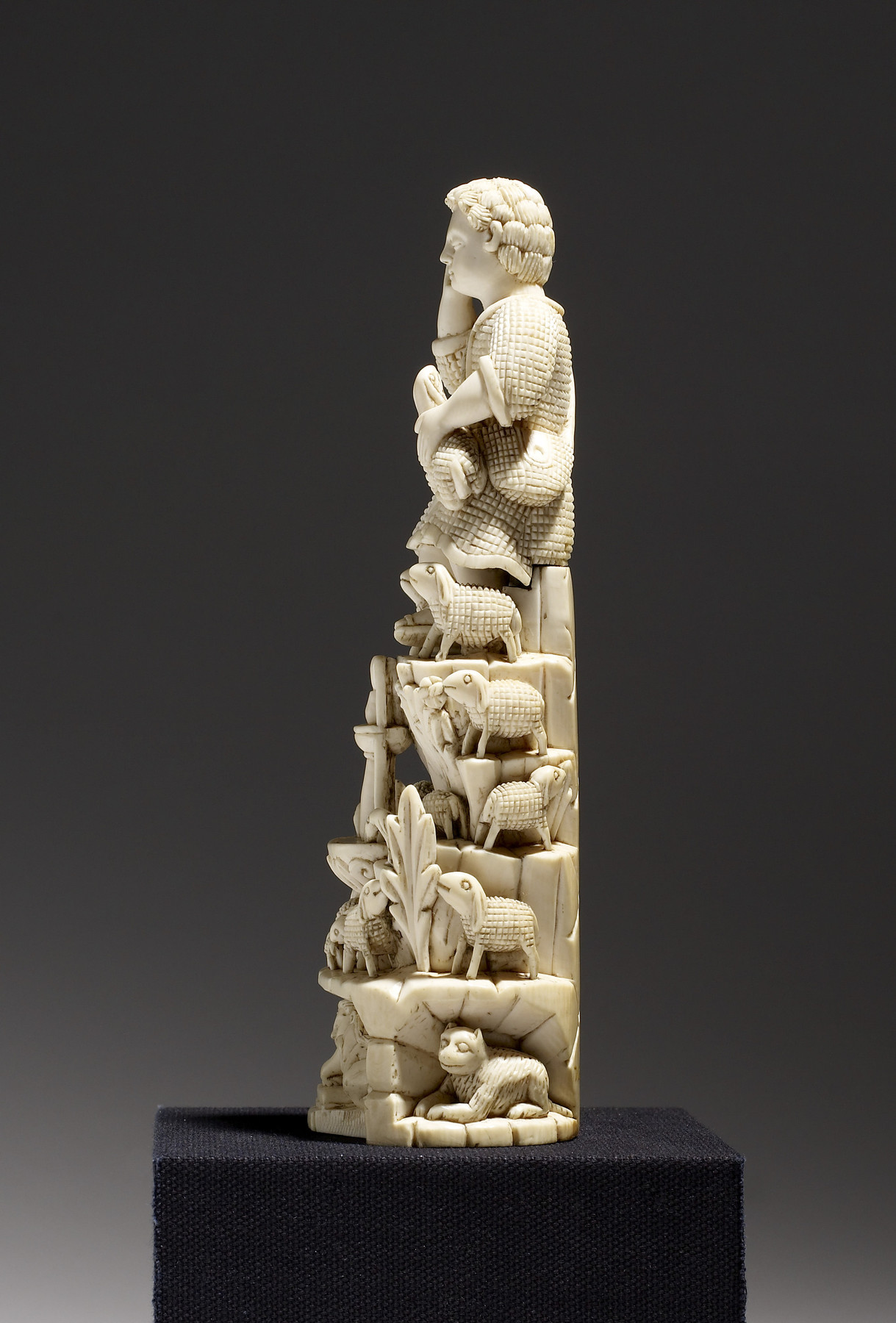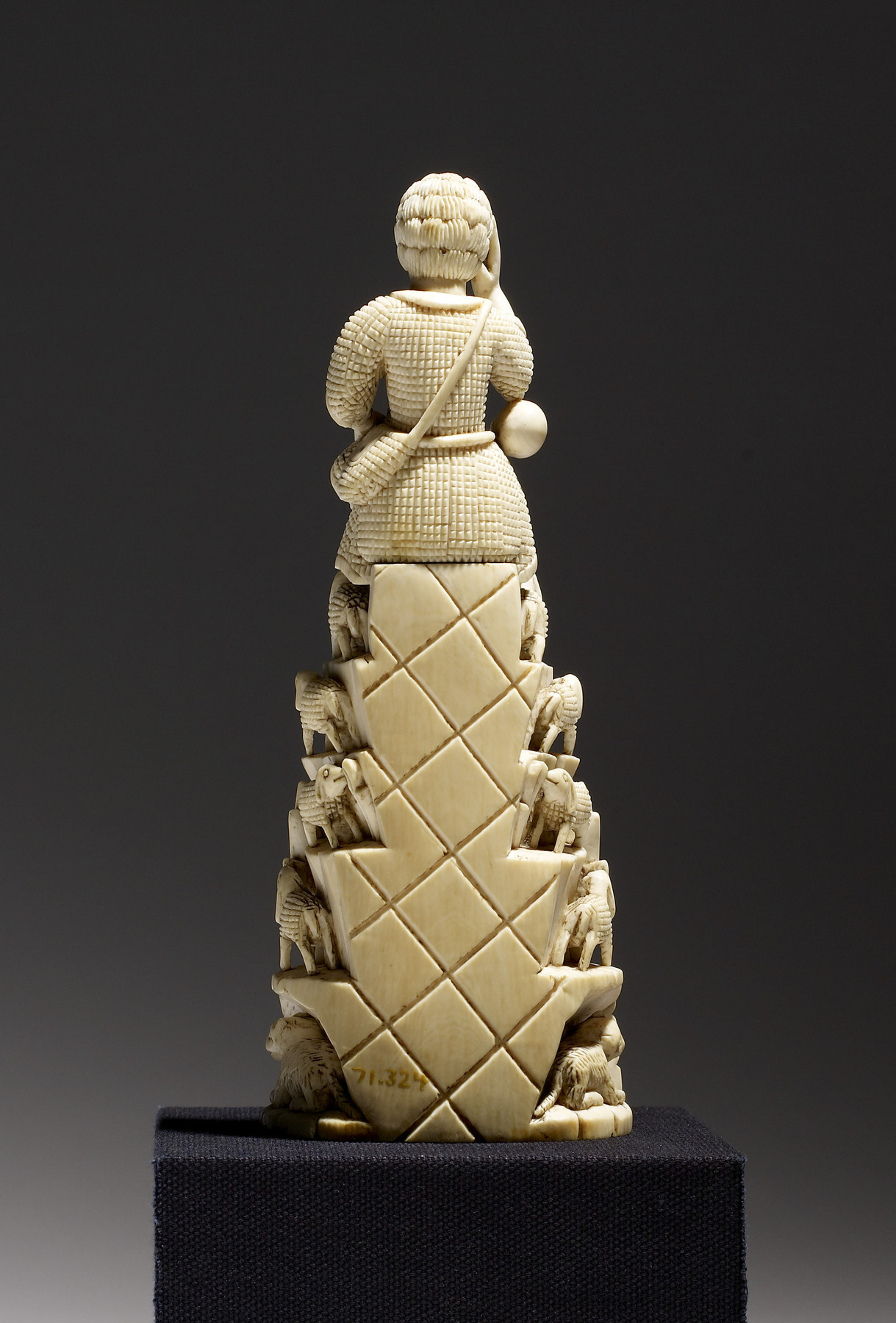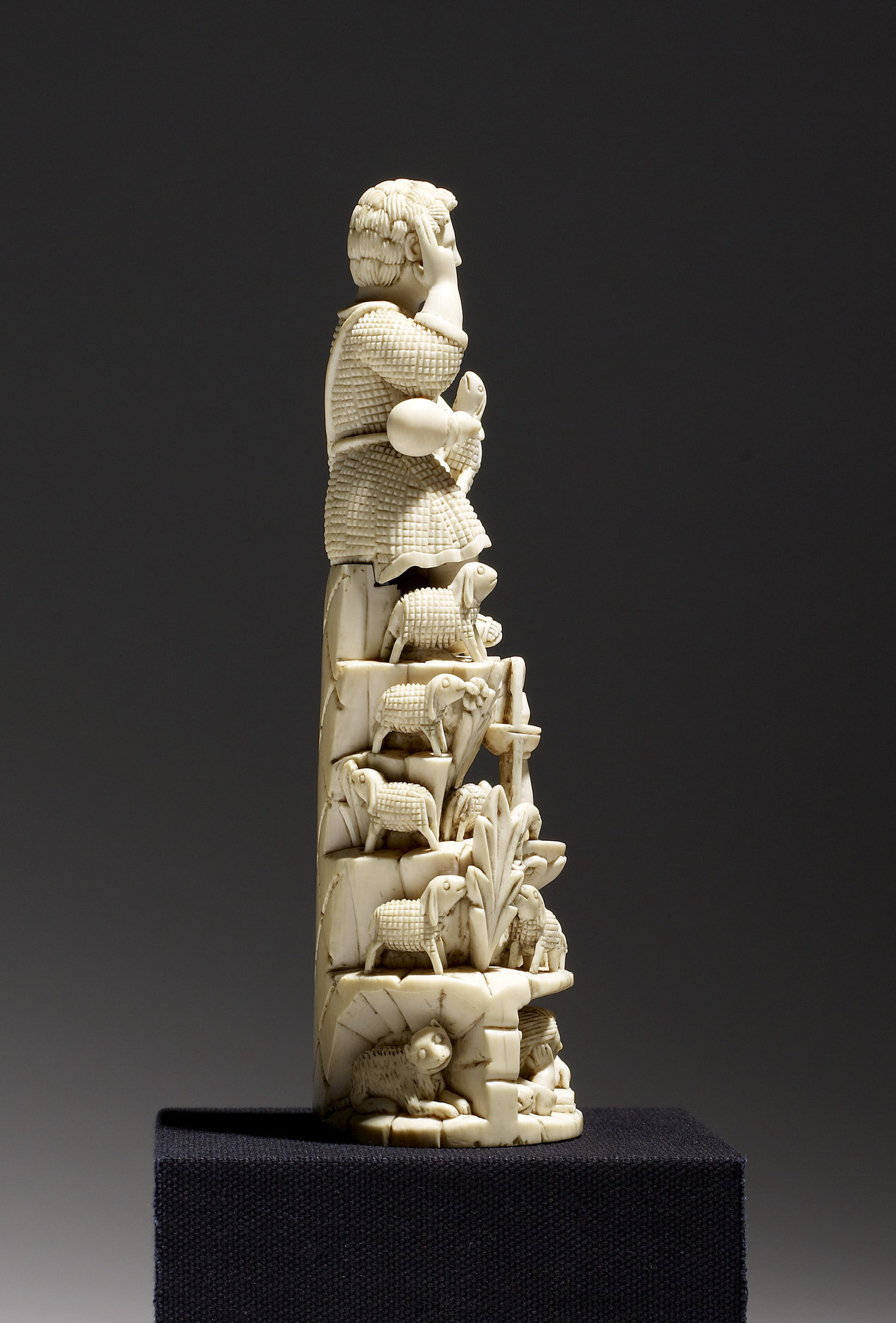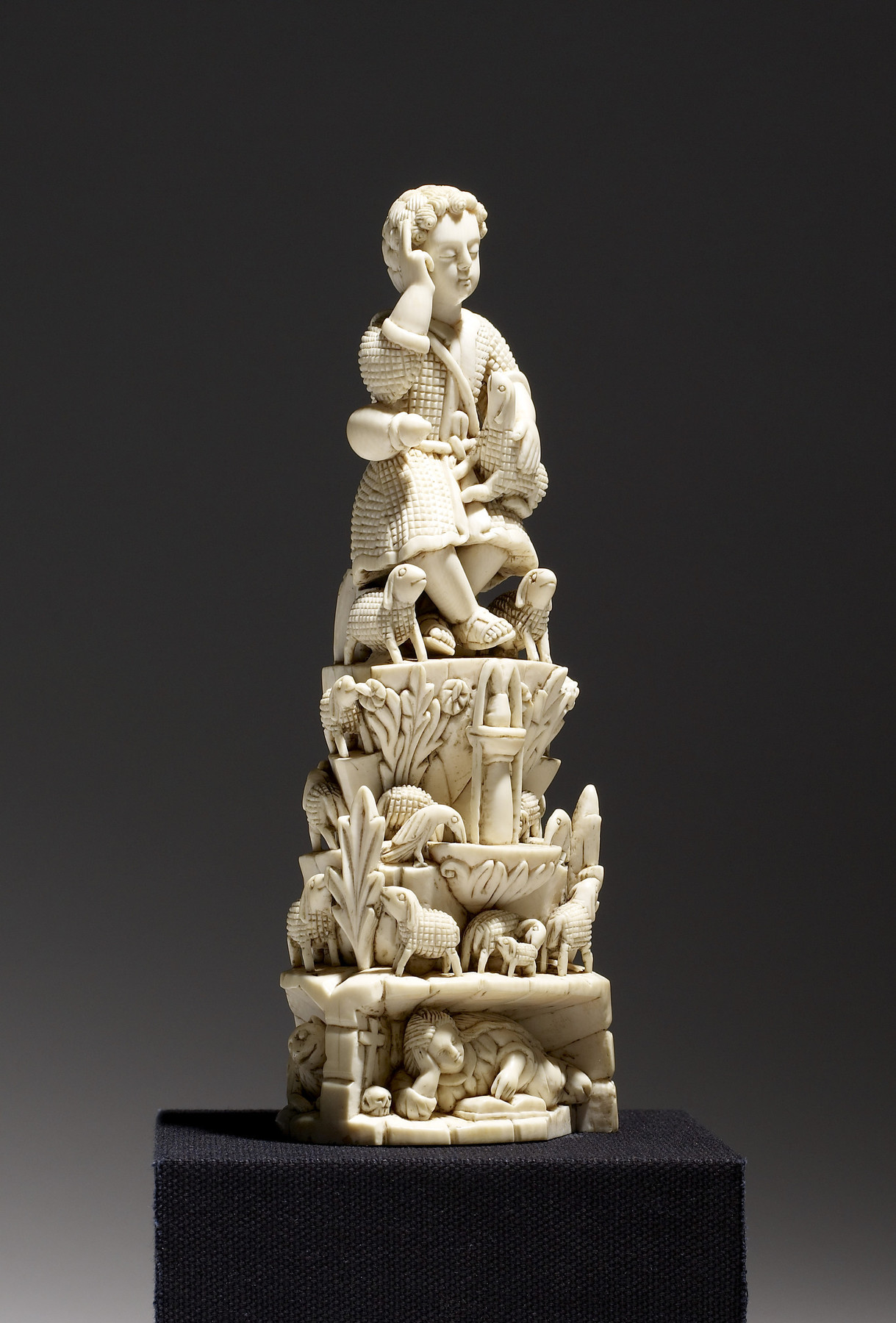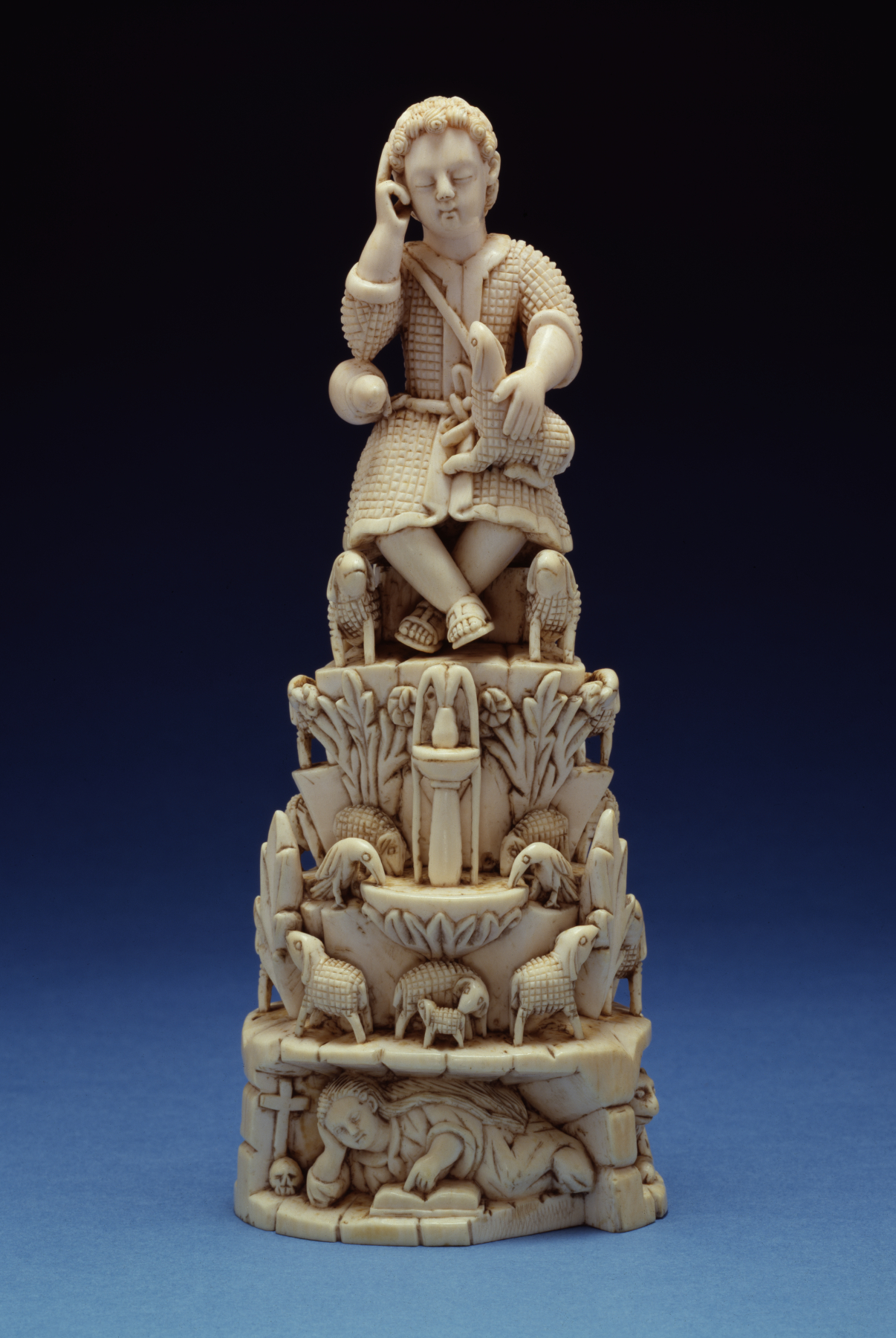The Christ Child as Good Shepherd
This ivory carving was produced in the Portuguese colony of Goa, on India’s western coast, where such sculptures were made for export and for Catholic missionaries in India. Aware of Mughal interest, Jesuits might have brought similar sculptures to the court. Jesus was regarded as a prophet in Islam, and images of Jesus and other prophets were collected by the Mughal courtiers and painted on the walls of Mughal palaces.
This popular compositional type of carved ivory statuette depicting the Good Shepherd was apparently invented in Goa (west coast of India), a Portuguese colony and Jesuit training center for missionaries. At the bottom, Christ's follower Mary Magdalene reads scriptures in a mountain cave, where, according to legend, she retired in later life. Above is a fountain of life (suggestive of baptism) with doves and lambs, and at the top is the meditative figure of the Christ Child sitting with a lamb. Christ's eyes are closed. The gesture of his right hand, lightly touching his hair with two fingers, is seen by some scholars as adopting a gesture of the Buddha.
Provenance
Provenance (from the French provenir, 'to come from/forth') is the chronology of the ownership, custody, or location of a historical object.
Don Marcello Massarenti Collection, Rome; purchased by Henry Walters, Baltimore, 1902; by bequest to Walters Art Museum, 1931.
Exhibitions
| 2015-2016 | Pearls on a String: Artists, Patrons, and Poets at the Great Islamic Courts. The Walters Art Museum, Baltimore; Asian Art Museum, San Francisco. |
| 1983-1984 | Ivory: The Sumptuous Art. The Walters Art Gallery, Baltimore. |
| 1971-1972 | World of Wonder. The Walters Art Gallery, Baltimore. |
Conservation
| Date | Description | Narrative |
|---|---|---|
| 1/11/1962 | Treatment | cleaned |
| 10/8/1982 | Treatment | cleaned |
| 10/23/1987 | Treatment | cleaned; examined for condition |
| 11/1/1999 | Treatment | cleaned |
| 5/7/2005 | Treatment | cleaned |
Geographies
India, Goa (Place of Origin)
Measurements
H: 6 7/8 × W: 2 11/16 × D: 1 15/16 in. (17.4 × 6.8 × 5 cm)
Credit Line
Acquired by Henry Walters with the Massarenti Collection, 1902
Accession Number
In libraries, galleries, museums, and archives, an accession number is a unique identifier assigned to each object in the collection.
In libraries, galleries, museums, and archives, an accession number is a unique identifier assigned to each object in the collection.
71.324

